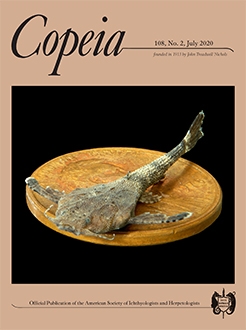The squamates occur in a variety of climates from tropical to Arctic regions. Being poikilotherms, snakes and lizards in temperate regions, and high elevation tropical environments, must adjust their reproductive biology to reproduce at a time that optimizes offspring survival. The two major components of the reproductive cycle in both males and females are gametogenesis and mating. The reproductive cycle of males is the focus of this study. In snakes in temperate climates, sperm production (spermatogenesis) may occur immediately prior to mating (prenuptial spermatogenesis) or following mating (postnuptial spermatogenesis). In postnuptial spermatogenesis, sperm are produced following the mating season and stored in the efferent testicular ducts (primarily the ductus deferens) until the following spring mating season. Given that most recent phylogenetic reconstructions resolve snakes as a monophyletic group of highly specialized lizards, it is generally assumed that lizards have spermatogenic cycles similar to snakes. Lizard spermatogenic cycles are often described as prenuptial or postnuptial. We propose that the major difference between snake and lizard spermatogenic cycles is the presence of postnuptial spermatogenesis in snakes and the absence of true postnuptial spermatogenesis in lizards. Our interpretation of lizard spermatogenic cycles suggests that all lizards have prenuptial spermatogenesis (i.e., sperm are produced immediately prior to mating). If fertilization occurs months after mating, the female, and not the male, stores the sperm until spring ovulation and fertilization. Using a variety of analytical tools, we analyzed the reproductive strategies of snakes and lizards, and we have concluded that they differ in fundamental ways. Most notably, prenuptial spermatogenesis is the ancestral condition for Squamata with continuous spermatogenesis evolving multiple times independently within lizards and snakes. We also found that postnuptial spermatogenesis evolved early in the evolutionary history of snakes but, we argue, has never evolved in lizards. We suggest that the evolutionary origin of snakes may account for the differences observed in snake versus lizard reproductive cycles, and we present a scenario for the evolution of snake reproductive cycles.
How to translate text using browser tools
4 May 2020
Seasonal Timing of Spermatogenesis and Mating in Squamates: A Reinterpretation
Robert D. Aldridge,
Dustin S. Siegel,
Stephen R. Goldberg,
R. Alexander Pyron
ACCESS THE FULL ARTICLE





